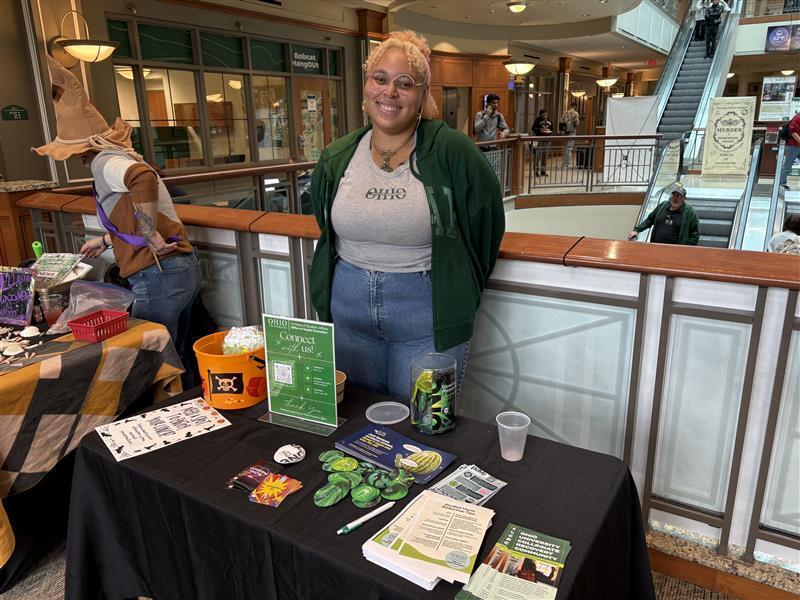
Unfortunately, sexual assault affects millions of Americans every year – in fact on average, every 68 seconds an American is sexually assaulted according to the Rape, Abuse & Incest National Network (RAINN). They also report that more than 463,000 survivors aged 12 or older every year across the country. This type of violence impacts people from all walks of life: people of all genders, young people and old people, single people and people in long term romantic relationships and people across sexual orientation and preference identities. While these numbers have decreased by about 50% in the last twenty years, there is still so much work to do.
This blog post is about consent and boundaries and how they play a role in healthy relationships and sexual experiences. Through open and honest conversations, education and advocacy, we can all make sure that we are doing our part to end sexual violence.
What is Consent?

Let’s start by defining ‘consent,’ because it is a critical part of any sexual experience and/or relationship! Touching or sexual contact without consent is sexual assault. A straightforward way to think about consent is determining what it is, and what it isn’t (and believe us, it is that black and white)
Consent is…
- Affirmative: a verbal ‘yes’ and not the absence of a ‘no,’ much like the way airlines ask passengers in exit rows for a verbal yes.
- Informed: everyone knows what they are agreeing to, for example, granting consent to participating in oral sex does not automatically include consent to any other forms of sex.
- Voluntary: consent is given without any pressure, coercion or force.
- Revocable: any partner involved can change their mind and say ‘no’ or ‘stop’ even if they’ve already granted consent.
- Ongoing: consent is granted by partner(s) throughout the sexual experience, not just at the beginning or before it starts.
- Sexy: consent lets partners know you are enthusiastically interested in the sexual experience and can heighten the attraction and connection.
Consent is not…
- Intoxicated or Under the Influence: consent cannot be given by someone who is under the influence of drugs or alcohol.
- Asleep or Unconscious: consent cannot be given by someone who is asleep, unconscious or semi-conscious.
- Body Language or Flirting: consent cannot be assumed just because there is body language to suggest so, flirtation or dancing.
- Dress or Style: consent cannot be interpreted through style of dress or undress.
- Minor Age: consent cannot be granted by a legal minor, under the age of consent (16-18 years, depending on the state).
- Legally Restricted Groups: consent cannot be granted by someone who has been diagnosed with a serious mental disorder, developmental or physical disability that might influence their decision-making.
Setting Boundaries with Significant Others

Consent is pretty cut and dry, right? Sometimes, consent is overlooked for people in long term romantic relationships. A significant other (like a boyfriend, girlfriend, partner, wife, husband, spouse etc) can absolutely choose when, where and how they want to enjoy sexual activity regardless of the level of commitment in the relationship. Your relationship is not license to cross anyone’s boundaries. Good communication strategies are a tried and true way to avoid crossing boundaries or making your partner feel uncomfortable or unsafe. Plus an added perk beyond making sure your partner feels safe is that it can help build greater trust, respect, and intimacy, all of which in turn can make your sex lives even more explosive.
Looking for some tips on how to communicate boundaries to your partner(s)? Here are some tips and tricks from our team at ONE®:
- Before you talk: Carefully consider whether you and your partner(s) will be more comfortable speaking privately one-on-one, or maybe in a public setting, or even with a public health or mental health professional. Think about what time of day makes sense for your conversation and whether you have a specific occasion or location that will be comfortable. Do your research and come to the conversation as informed as possible, including any sensitive language around anything you want to talk about. Remember what your goal is to achieve by the end of the conversation: understanding and trust.
- During your talk: Keep an open mind, and try to create a judgment-free space. Don’t assume and don’t push – sexual abuse survivors may not have disclosed to partner(s) and may not be comfortable sharing. Take turns talking about your experiences, preferences and desires, but also leave time for your partner to respond and express their comfort with what you’ve said. Be sensitive, but specific. Some good phrases to think about are:
- “I just want to make sure we’re on the same page. What do you think about…?”
- “I’m really into you and want to make you feel good. What do you like? How can I make you feel good?”
- “I prefer this. What do you prefer?”
- “I want you to be comfortable. Would this be ok?”
- After the talk: Abide by what your partner(s) have expressed. Ask for affirmative, ongoing consent, in case they have changed their mind or are open to trying something new. In the case of something new, a good policy is to let them take the lead or to pause and talk it out. Consider setting another time to talk about how things are going.
We cannot emphasize enough how important these types of conversions can be with partner(s) who have experienced past relationship trauma or boundary violations. The process of healing can be lifelong, and by listening, respecting and communicating, you can avoid making them feel unsafe or experience further harm. If your partner has shared that they are a survivor with you, there are a lot of great resources out there (we’ll list them below) as well as our past blog post here.
We have also compiled more in depth discussions on how to start conversations about sex. We strongly recommend a Yes, No, Maybe list, too!
Additional Resources

The good news is that in more recent years, resources have sprouted up all over for people looking to educate themselves and others on healthy relationships, as well as to provide support and care for those who have experienced sexual violence in any form.
Here are some of the resources we recommend you start your search with:
- Rape, Abuse & Incest National Network (RAINN) – the nation’s largest anti-sexual violence organization, which has a wealth of online resources, as well as a national sexual assault online chat hotline (you can also call them 24/7 at 1-800-656-4673).
- Planned Parenthood – a national nonprofit that provides reproductive and sexual healthcare and sexual education around the world, also has some great resources around sexual consent.
- Confi – an organization that creates expert-approved info on various health topics, including consent, sexual health and relationships.
- Love is Respect – a site specializing in resources to build healthy romantic relationships and communicate with your partner(s)




Share:
The shocking surge of STDs
Play safe at Pride